4 Best Apps to Limit Screen Time on Mobile 2025
I tested over 30 apps that claim to have strong or powerful screen time features. I installed them on my children’s devices, so I could see for myself how well they performed, what features they have, and whether or not my kids could find hacks to bypass the restrictions.
After months of testing, I concluded that Qustodio is the best app for setting screen time limits. It makes it easy to create a daily or weekly schedule, and I was able to set an overall daily screen limit, or enforce separate limits for each app. Additionally, I can press the Instant Lock button to block the device at any time. You don’t have to take my word for it when you can take advantage of the Qustodio 30-day free trial to see how powerful its screen time limits are.
Try Qustodio Free for 30 Days!
Short on Time? Here Are the Best Screen Time Limit Apps — Tested in 2025
- Qustodio: Comprehensive screen time tools for setting overall daily usages, time limits for each app, and a custom schedule for when the phone or tablet is available.
- Bark: Custom categories for what apps are available at different times throughout the day and a pause device button, but it doesn’t have a daily screen time limit.
- Norton Family: Multiple tools for setting screen time limits, including special School Time rules, but the calendar and daily limits only work in 30 minute segments.
- Mobicip: Three tools for limiting screen time and the available apps, but there is no option to activate instant lock for only one device.
1. Qustodio: Best App for Limiting Screen Time with a Comprehensive Collection of Features
- Combine a daily screen time schedule with an overall daily usage limit
- Set screen time rules for each app
- Instant Lock lets you block the phone anytime from anywhere
- Powerful web filter with over 40 categories
- Try it free for 30 days – no credit card required
2025 Special Offer: Save 12% when you use the coupon code WIZCASE12 at check out.
After a few weeks of testing, I was happy to see that Qustodio lived up to their words. I know that it sounds obvious, but believe me, it’s not. There are so many apps that make promises or claims, but can’t back it up. This is not the case with Qustodio. The app had everything I was looking for in terms of limiting screen time on multiple devices. When my kids used their allotted screen time, they couldn’t deactivate the app or bypass restrictions to extend it.
I created a different set of rules for each of my children; it didn’t matter that one child has an iPhone, another uses Android, and a third is on a laptop. Everything is managed from a cloud-based dashboard that I can access on any device.
The first step was to select a child profile and set a total screen time limit for each day. It gave me the option to apply one set of daily rules, different limits for the weekend, or customize each day.
The second feature is a screen time usage schedule. It lets me create a custom schedule for when they can’t use the phone. For example, I can block it while they’re in school or going to sleep. The schedule works with the overall daily limit. This means that even if there is a potential for 9 hours of screen time on the schedule, they’ll still have to consider the daily limit when going on their screens.
I was very happy when I saw that I could set time restrictions for individual apps and games, since it’s easy for kids to lose track of time when using some apps. Qustodio also gives the option to block the app or allow it all day, regardless of the screen time rules. This is important if there are apps that you want your child to be able to access, like maps, bus or train schedules, messenger, or educational tools.
Qustodio also has an Instant Lock option that I can access from the parental dashboard. It’s helpful during dinner or if I need the kids off their screens, regardless of the screen time calendar. I just click a button and their phones will be immediately blocked.
Qustodio has a free option that includes the daily screen time limit and calendar. However, it only works on one device and doesn’t include any of the premium parental control features, such as location tracking, app management, and monitoring calls and messages. Instead, you can take advantage of their free trial – no credit card needed, and get the premium version free for 30 days. At the end of the free trial, you can upgrade your account and continue using the premium features or continue with a free account to enforce screen time limits.
Try Qustodio Free for 30 Days!
2. Bark: Set Up a Daily Screen Time Routine with Custom Rules
- Customize what apps each child can use at each time of the day
- Pause any device from the dashboard
- See detailed reporting on screen time usage
- Try Bark free for 7 days!
During my research and tests, I discovered that Bark has a unique method for managing screen time. The concept is to create a daily and weekly screen time routine. It’s similar to a schedule that Qustodio uses, except I was able to customize what apps and websites or web and app categories are available.
At first, I was disappointed that they don’t have an overall time limit, which works together with the schedule. It prevents the kids from spending every available minute on the screen, and teaches them to budget their time.
However, once I implemented the Bark screen time routine on my kids’ phones, I came to appreciate their method.
Bark lets you create up to 4 different segment types for screen time. Each segment comes with default settings and rules based on the child’s age. However, you can also customize the rules for your child’s needs. The segments are:
- School Time: I gave my kids access to educational apps and websites and unlimited access to apps they need for school, like Word, Excel, Google Docs, and the school’s app. I blocked all entertainment and social apps.
- Free Time: This segment is for when my kid can relax and hang out on the phone or computer.
- Bedtime: I give my two oldest kids access to their music apps when they go to sleep, but I block social media and entertainment apps.
- Default: I like that I don’t need to create a segment for every minute of the day. An empty time slot will revert to the default rules, filters, and blocked apps.
Bark also has the option to block the internet from my kids’ devices with just a click on a button. This feature is called Pause Device and it lets me pause their phones from my dashboard without me having to adjust the routine.
In order to make better time limits decisions, I can look through the usage reports on the Bark dashboard. These are full of insights and it details the total amount of time spent on the device and breaks down the screen time usage for each app.
Bark has two plans, both of which work on unlimited devices. If you’re only concerned with setting screen time limits, you can subscribe to the Bark Jr. plan. However, if you want to test out the advanced features, which include the best social media monitoring, get a 7-day free trial and access to all the Bark Premium features.
3. Norton Family: Multiple Screen Time Features Including Dedicated School Time Rules
- Combines a daily usage schedule with an overall screen time limit
- Monitors screen time for each app
- Kids can request additional time from the Norton Family lock screen
- 30-day free trial
Norton Family has been improving lately and quickly rising in my overall ranking. While testing the screen time limit features, I was happy to see that even though it has a default, age-based screen time rules, I still had the option to create a custom schedule.
Setting the rules is a straightforward process. I opened the dashboard on my computer, chose a child’s profile, and opened the Time Supervision section. Then, I was able to select the times that I wanted the kids to have access to their phones and when they should be blocked. I also added an overall daily screen time limit to prevent them from spending all their free time looking at a screen.
My only complaint is that the schedule and daily limit work with 30-minute time blocks, and I prefer more flexibility to reflect our schedules better.
Norton has a School Time feature, and I found it to be a big help for my older kids. It blocks most apps and websites while continuing to allow access to educational ones. School Time doesn’t count against the regular screen time limits, so the kids won’t have to decide whether to do their homework or save screen time for streaming, gaming, or whatever else they’re doing on their phones and computers.
My kids couldn’t find a weakness in the screen time limits. They couldn’t open any apps or websites without seeing the Norton Family lock screen, telling them screen time was over. There is a link to request more time, which I can grant from the parental dashboard. Additionally, Norton Family creates a list of House Rules, which the kids can view on their phones and computers. It details how much screen they have each day and how they’ve already used up. This way, there are no surprises.
Norton Family has a 30-day free trial that gives you unlimited access to all premium features, so you’ll have enough time to test the app and see if this is the right parental control app for you.
Try Norton Family Free for 30 Days!
4. Mobicip: Set Screen Time Limits in 15 Minute Increments
- Set custom screen time usage rules for school and bedtime
- Vacation mode temporarily removes all screen time rules
- Try it free for 7 days!
While Mobicip has a solid collection of screen time features, I saw that my kids had figured out some ways to bypass the screen time limits for apps. The good news is that once I knew how they were doing it, it was easy enough to block it from continuing.
The two tricks that my kids discovered were to uninstall and reinstall the app and change the time on the phone. I was able to lock the phone settings, so my child couldn’t change the time. While there is no way to block deleting an app, I do get notifications when a new app is installed. So, when I saw that an app that I had set limits was just installed, I decided to block the app completely to show the kids that I knew what they were doing.
The app has an overall daily limit and a daily usage calendar. I like that it works in 15-minute increments, which gives me plenty of flexibility. The calendar is fully customizable, including the option to enforce different web filters and app blocking for specific time segments.
Once the calendar is set, Mobicip gives you three options for managing screen time:
- Set custom screen time limits
- Only allow screen time based on the calendar’s schedule
- Lock the phone the entire day
Mobicip groups all apps into three categories:
- Social media
- Entertainment
- Games
I can set the screen time rules for an entire category, which I find easier than going through each app one by one. It’s also nice that I can block all entertainment apps, but my kids can still use social media or chat apps to communicate with friends.
Mobicip has a unique feature called Vacation Mode. It’s a convenient way to temporarily disable screen time rules, without having to go through and recreate all the rules. What’s really great is that I can add an end date for Vacation Mode, and it automatically restarts all screen time limits. It’s one less thing for me to have to remember to do after vacation ends.
Currently, Mobicip is offering a 7-day free trial, with access to all the premium features. This should give you enough time to install it on your child’s phone, set the rules, and view the data reports in the parental dashboard, and see if it’s a good fit for your family.
Compare the Best Screen Time Limit Apps
| Overall Daily Limit | Instant Lock | Time Increments | Number of devices | Compatibility | Free Version | ||
| Qustodio | Yes | Yes | Fully customizable | Up to 15 | PC, macOS, Android, iOS, Amazon Fire, and Chromebook | 30-day money-back guarantee | |
| Bark | No | Yes | Fully customizable | Unlimited | PC, macOS, Android, iOS, Amazon Fire, and Chromebook | 7 day free trial | |
| Norton Family | Yes | Yes | 30 Minutes | Unlimited | PC, macOS, Android, iOS, and Chromebook | 60-day money-back guarantee | |
| Mobicip | Yes | Yes, but it locks all connected devices | 5 Minutes | Up to 20 | PC, macOS, Android, iOS, Amazon Fire, and Chromebook | 7 day free trial |
Try Qustodio Free for 30 Days!
Why You Should Avoid Free Screen Time Apps
After testing multiple free screen time tools, including Google Family Link and Apple’s Screentime, I realized they aren’t worth it. They didn’t work very well, drained the phone’s battery, and slowed down the device, especially when compared to the leading premium parental control apps. The one exception I found was the free version of Qustodio, and even that isn’t ideal if you want to set screen time limits on more than one device. However, it gave better value than the free options that were come packed in iPhone or Android devices. Completely free options can easily be disabled, uninstalled, or simply don’t work very well. Some other issues include:
- Privacy concerns: Free apps have to make money somehow. One common tactic is to sell your child’s data or use it for targeted advertising, which may not be something you’re comfortable with. It’s important to carefully read the privacy policy of any app you’re considering to understand how your data will be used.
- Reliability: Free apps are not as reliable as paid ones and don’t work consistently. This can make them frustrating to use and ineffective at helping you enforce screen time limits for your child’s devices.
- Limited features: Free apps may not offer as many features as paid options, such as the ability to block specific websites or set time limits for device use. This can make them less effective at helping you manage your child’s online activity.
- Compatibility issues: Make sure the app is compatible with your child’s device and the operating system it runs on. If the app isn’t compatible, it may not work properly or may not work at all.
- Limited Number of Devices: Free apps typically only allow you to set screen time rules on one device. If you want to set limits on the phone, tablet, and computer, you’ll need a premium screen time app.
While free parental control apps can seem like a good option, you will have to make some sacrifices in terms of functionality or reliability when compared to paid options. Instead, you can get Qustodio, which is reliable option, and take advantage of their free 30-day trial with no credit card required. This should give you enough time to learn your kids habits and see what limitations are needed. Also, use this time to see the differences and learn what you can get here compared to the free options.
Try Qustodio Free for 30 Days!
What to look for when choosing an app for limiting screen time
When choosing an app for limiting screen time, there are a few key things to consider:
- Ease of use: It’s important to choose an app that is easy to set up and use so that you can quickly and easily set limits on your child’s screen time.
- Customization options: Look for an app that allows you to set different screen time limits for different devices or activities. For example, you might want to allow more screen time for educational apps and less for social media.
- Can kids bypass the rules: No app is 100% foolproof, but the really good ones know its weaknesses and implement measures to ensure the rules are followed.
- Tracking and reporting: Choose an app that provides detailed tracking and reporting so that you can see how your child is using their devices and make adjustments as needed.
- Compatibility: Make sure the app is compatible with your child’s device and its operating system. It’s always better to chose an app that is works with iPhone and Android. This way, if your child will get a new phone at some point and switch brands, you won’t have to startover with a newparental control app
Overall, it’s important to choose an app that meets your specific needs and is easy to use, while also being reliable and providing the features and customization options you need to manage your child’s screen time effectively.
How I Tested & Ranked the Best Screen Time Apps in 2025
This was a time-consuming process that spanned several months and tested my children’s patience. I downloaded over 30 apps and installed them on all the phones, tablets, and computers in my house.
I had each app active on a device or two for at least a week, although if I saw major issues before then, I uninstalled it right away.
It’s important to note that I purchased all the apps on my own, and didn’t ask the company for a free version since I was reviewing their product. This way, there is no bias or favoritism on my part. Some of the major factors I used to set the ranking order were:
Does it work?
I was surprised at how many screen time limit apps simply didn’t work. I installed the app, enabled the screen time rules, and watched as my kids stared at the screen when the device should be locked.
Other apps worked but had weaknesses that my kids figured out, and there was nothing I could do to prevent it. For example, with one app, my son turned on a VPN, which bypassed the rules. While this is a common issue, the top screen time apps have tools to block the VPN app. However, several apps I tried either didn’t have the capabilities to block an app or the app block didn’t work.
How much control do I have over screen time?
While some apps have robust screen time tools that not only let me manage how much screen time each child has but what they do when they have screen time. Even though it might take a little longer to set up than simply allowing 3 hours a day of screen time, I find that it is worth it and creates a healthy balance.
The main features I look for are a daily or weekly schedule, an overall screen time limit, and time limits for apps. These features all have to work together to create a consistent screen time routine, so my kids understand when they can be online and what they are or are not allowed to do.
Is it easy to manage the screen time rules remotely?
The last thing I want to do is ask my kids for their phones when I want to set or change screen time rules. So, having remote access is a must-have feature. Overall, ease of use is important. I don’t want to spend too much time figuring navigating through the dashboard and figuring out how to adjust or enforce the settings. I prefer a simple interface without too many menus or the need to click through five different pages before I get to the screen time rules.
Another huge advantage is the ability to control all the devices, regardless of the operating system, from a cloud-based dashboard. I don’t want a different login page for Android, iOS, and computers. I want to open a child’s profile and have access to their devices, so I can add or change the screen time rules or lock the device instantly if needed.
Am I getting value for my money?
The subscription price is important. However, I believe you have to look at all the factors together to determine whether you’re getting a good value for the price. In fact, the cheapest option is rarely the best because the company doesn’t want to invest in better or more powerful features.
I also look at the free trial or money-back guarantee. I always test these policies to ensure that I’m not getting billed when it claims to be free, and my money is refunded in full when I cancel the account during the money-back guarantee period.
Try Qustodio Free for 30 Days!
FAQ
Are there any good free screen time limit apps?
I tested plenty of free screen time tools, and they always disappointed me. The main issues I came across were that these apps simply didn’t work. My kids found a way to bypass the Google Family Link rules in a few hours, and they uninstalled some other apps without me even knowing.
The best free option I found was Qustodio, which has a limited free version. It does give access to the overall daily limit and screen time usage calendar, but it only works on one device and doesn’t have access to the premium features. I recommend registering a free account and starting off with a 30-day free trial that includes unlimited access to all features, so you can see if it’s a good fit for your family.
Can kids get around screen time limits set by parental control apps?
Can I see how much screen time my child uses every day?
All of the best screen time limit apps can generate screen time reports that are available on the parental dashboard. The details differ from app to app, but generally speaking, you’ll see how time is spent in front of the screen, the apps they commonly use, and the websites they view. With this data, I know whether I need to set time limits for specific apps if they’re using their phone in school.
One of the reasons I like the Qustodio 30-day free trial is that I was able to get a detailed overview of my children’s screen time habits for free. With this report, I noticed that with one of my kids, I don’t have to set as screen time limit as he didn’t spend too much time on his phone.
Can a screen time app work with computers, Android, and iOS devices?
Only a Premium Parental Control App Can Set Screen Time Limits
There is no shortage of apps that claim to be “powerful” or “comprehensive” when it comes to enforcing screen time limits, but based on my testing, most of these claims can’t be backed up.
I found 4 parental control apps with high-quality screen time limit controls. Each one allowed me to create a flexible screen time schedule, lock the device remotely, and provide detailed reporting. Among them, Qustodio performed the best. It has flexible tools for creating a screen time calendar, an overall daily limit, and screen time limits for individual apps. Best of all, my kids couldn’t find a way to bypass the rules and continue to use their phones when Qustodio locked them.
Not only that, but Qustodio has a free 30-day trial, no credit card needed, so you can test it for yourself and get unlimited access to all these premium features.

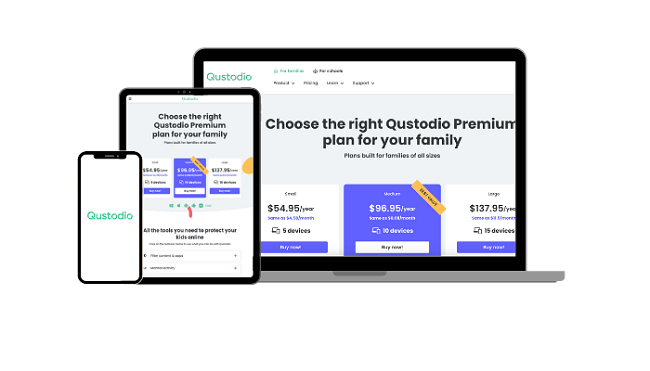
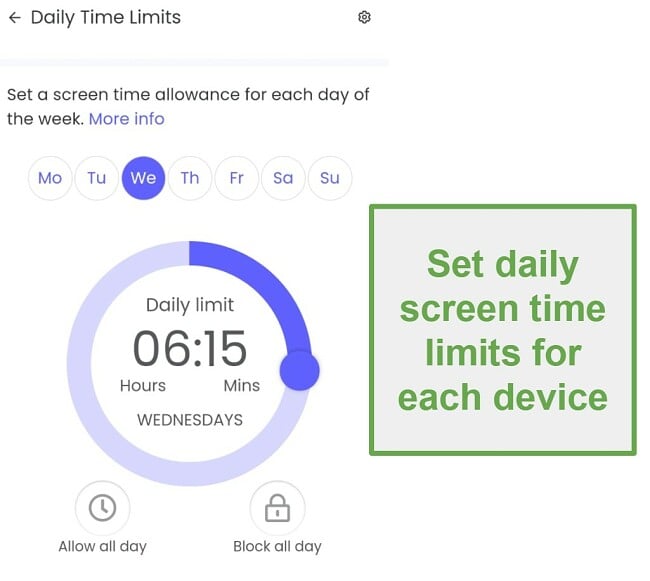
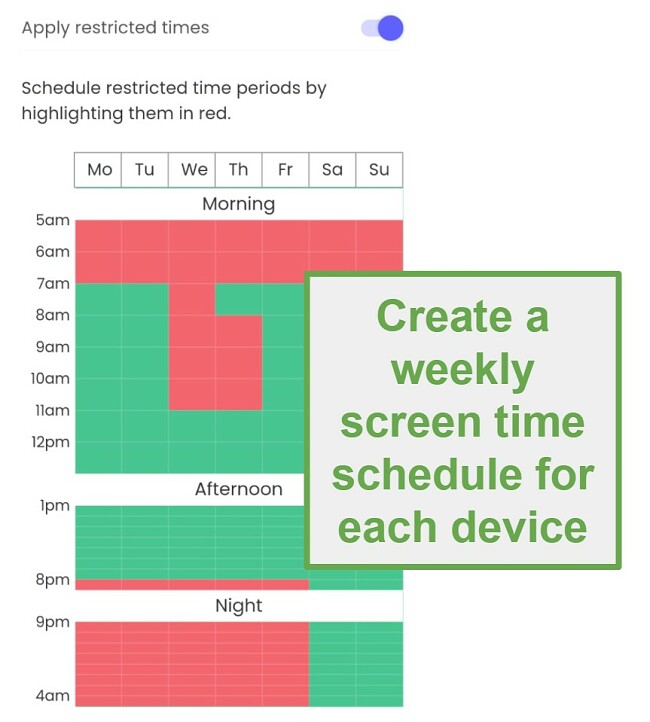
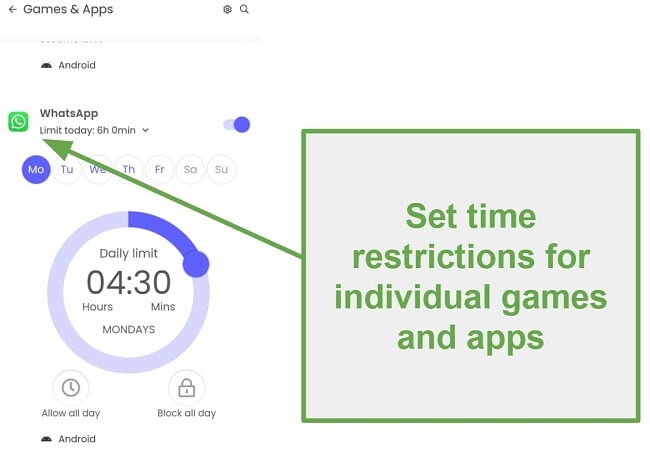
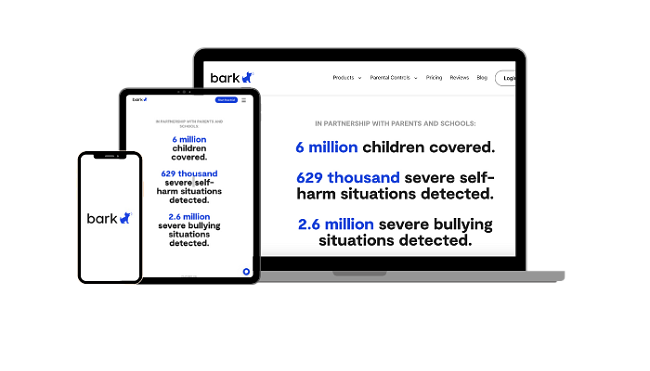
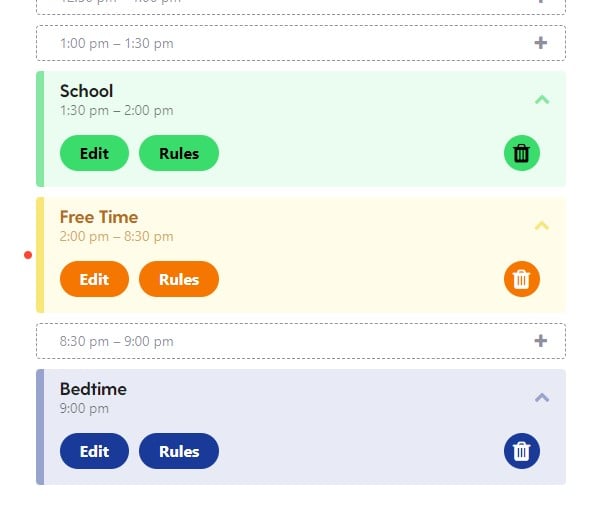
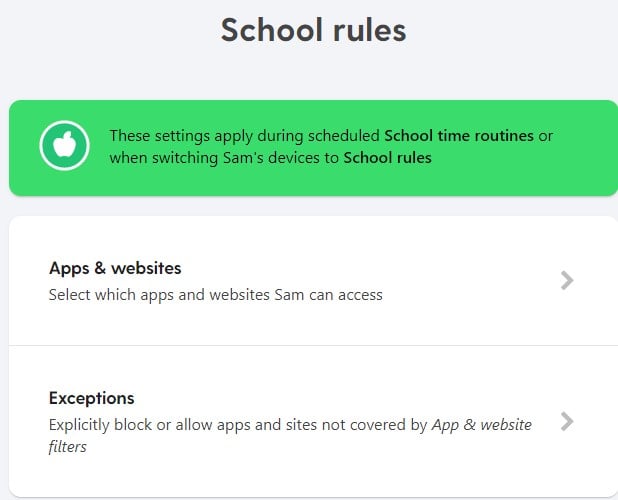
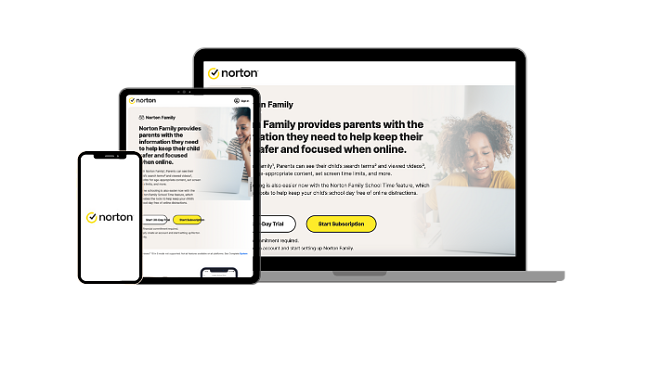
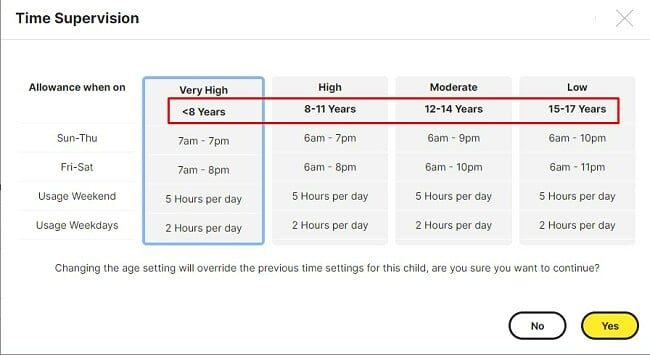
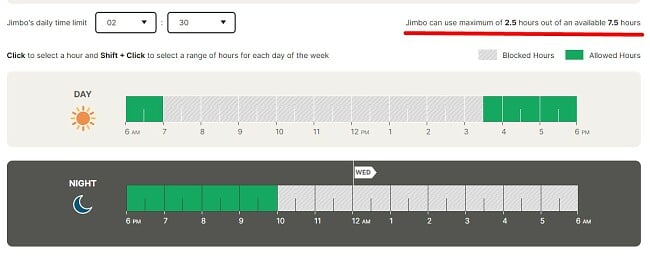
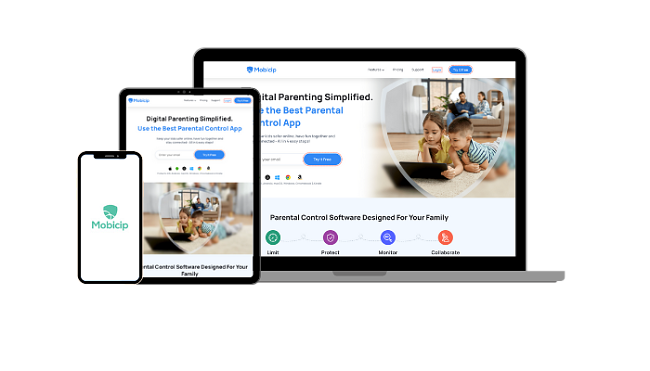

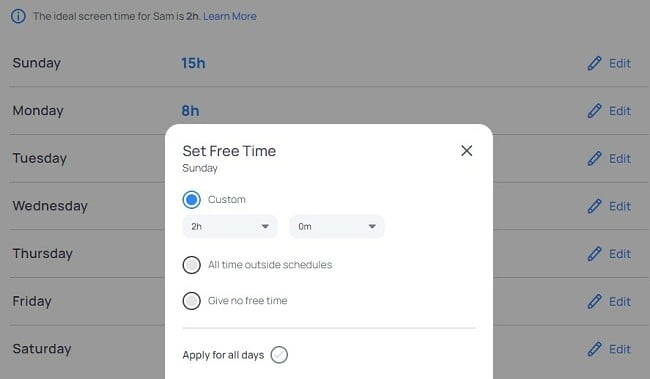




Leave a Comment
Cancel